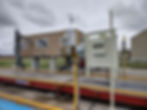Four Common Bottlenecks in Agronomy Facilities
- Easy Automation
- Jul 1, 2022
- 3 min read
While many of us may dream of building a new facility with all the latest technology and new equipment, that might not be in the five-year plan for many of us. The next step is to take a critical look at what we have at our facility and identify the bottlenecks that would make an impact on overall throughput.
Each facility is different in terms of the challenges they experience, but from our experience, these are the four most common bottlenecks for agronomy facilities:
1. Equipment Optimization
2. Reclaim Capability
3. Loadout Process
4. Impregnation or Chemical Injection
Equipment Optimization
How hard is your equipment working for you? Are you running all your equipment at the same rate or are they customized based on product type and inclusion rate? We recommend setting up your variable frequency drives (VFDs) to change based on product type to ensure that you are taking advantage of moving lighter products faster and leaving heavier products on a lower rate. In addition to fine-tuning VFDs, one other area we often see time lost is in the clean out process. How long does your cleanout process take? We want to make sure the downstream equipment after the blender is set so proper cleanout can be accomplished, but also not in excess. If it only takes your system 60 seconds to clean out, we don’t need to have it set at 90 seconds. You’d be surprised how much time can be made up in this process.
Reclaim Capability
A blending system only runs at its full efficiency if the product is coming into the blender at the same rate. Not being able to see current inventory in your bins can cause slowdowns and bottlenecks throughout the day. Predictive reclaim in dry product facilities allows the operator to see how much of each product is needed for the upcoming runs and allows them to work ahead to ensure the flow of product will meet the demands of the upcoming batches. Using a tablet in the payloader or out on the facility floor can increase production time and overall efficiency significantly.

Loadout Process
If your facility is constantly slowed down by internal transfer loads running through the retail loadout base, we recommend looking into an unattended loadout process. A remote truck scale and kiosk interface can alleviate some of the day-to-day truck flow issues and stress that comes with moving product out of your facility. An unattended solution creates a separate station for trucks to pull up to a check-in kiosk, be routed to a loadout landing, and start the blending process without ever getting out of the truck. After the load is complete, the truck can pull over a truck scale to capture loaded weight, sign, and get a printed ticket all while staying in the cab of the truck.

Impregnation or Chemical Injection
Waiting on chemical injection or impregnation hand adds slows down batching time and creates an extra step for operators to execute. When an operator is manually controlling the inclusion of ingredients through a manual lever, there will be variation. Generally, these products being added are high cost and high regulatory products. Applying automation to this process in your facility can decrease human error, increase accuracy and safeguarding of these high cost, high risk products.
Interested in exploring how to address these bottlenecks with automation technology? Visit www.easy-automation.com or call 507-728-8214 and ask for our sales team. We value your partnership and look forward to solving your automation challenges with you.

